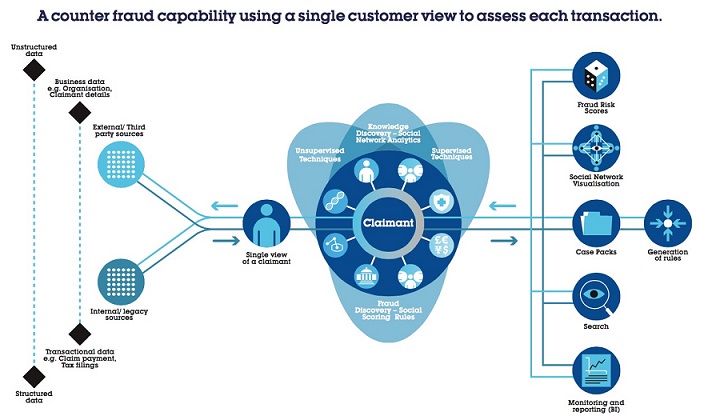Generic
The new relationship Citizen – Government* #IBMBEGOV (part seven): Fraud Detection
17/02/2015 | Written by: Think Blog redactie (0cB)
Categorized: Generic
Share this post:
The use of technology in government’s relationship with its citizens can also enable governments to step up the fight against tax fraud. Fraud and error is a massive drain on public finances. It combines government’s money with funds that have been dishonestly or mistakenly removed from the public accounts. And because of its long history and complex political structure, Belgium is, by tradition, very susceptible to fraud. The complex and multifaceted nature of the public sector makes it a primary target for fraudsters. The amount of money lost in 2012 through fraud and error accounts for approximately 0.6% of the GDP, which means more than € 7 billion. This is a very heavy burden at a time when public finances are under unprecedented pressure.
To combat these losses, the government needs to develop at least two capabilities. First, it needs to be able to identify where fraud and error losses are occurring, or are most likely to occur. Second, it needs solutions that meet day-to-day operational needs, with front-line tools and embedded processes that reduce the amount of fraud and error that happens in the first place. The implementation of advanced analytic techniques and the creation of a single customer view are vital if these needs are to be met. However, moves in this direction are hampered by a number of various factors.
Nonetheless, the government can take action by working to integrate the data, collect the right debts, reduce the amount of fraud and ultimately direct public money to where it is needed the most. As discussed in the previous blog posts, the government is flooded with huge amounts of data, especially when the channel is shifted from the traditional face-to-face and paper-based models to websites and automatic services. Analytics could make sense of the growing volume, velocity and variety of available data, allowing government to get more out of its investments in the new channels.
Therefore, tackling fraud and error should start with a transformation of the way the government interacts with individuals. As touched in the previous posts, citizens expect government to have a single customer view of them. Closer integration of data pave the way for a single point of contact with government, improving efficiency in the delivery of services and providing enhanced levels of customer satisfaction.
Also, analytics should reduce in this time the cost and complexity of investigating abuse. The ability to pursue more cases, more effectively, not only stems long-terms losses but also serves as a deterrent. Data analytics could very well allow government to ask better questions and build better models, based on the principle: design once, build once – a single secure hosted platform with shared data and processes would help to optimize outcomes and life cycle.
For more details applied to the Belgian government, you can now download the new IBM White Paper.

Joan Van Loon, IBM
Author: Joan Van Loon, Enterprise Business Unit Leader Public, Life Sciences, Telco & Utilities | IBM Belux
About the author: Joan has over 17 years of experience in business management and management consulting, with expertise in diverse areas like business operations and transformations, IT strategy & governance, quality management, knowledge management and people management. He is currently leading the Public Sector in IBM Belux with personal focus on Watson, government innovation and healthcare.
____________________________________________________________________
*The new relationship Citizen – Government is full series of 8 articles and studies about how the new era of technology changes is perceived and embraced by the public authorities and which are the new challenges encountered when trying to keep or build a relationship with the modern citizen or when trying to ensure them with security.
Automate work and accelerate business growth
Many companies need help to navigate the rapid changes that define today’s business environment. To improve their responsiveness and flexibility, they are looking for new ways of conducting business, rethinking their processes, and investing in digital transformation projects to increase the robustness of their operations. They rely on business automation technologies to cut out repetitive […]
Sustainability and the technologies enabling the transition
Creating a sustainable future demands significant technological innovation to decarbonize society, restore biodiversity and ecosystem health, foster thriving oceans for sustenance and economic growth, remove atmospheric carbon, transition to sustainable agriculture, and advance eco-friendly cities that align with our vision for a better future. Generative AI has achieved much in recent years and now surpasses […]
Technology in action at Think Summit 2021
Covid 19, the energy transition and climate change require business agility… right away! Organizations that are slowly starting their digital transformation are irrevocably overtaken by competitors: companies that can quickly realize new, sustainable business models with a remote workforce. How can organizations leverage innovations such as AI, machine learning and hybrid cloud to make […]




